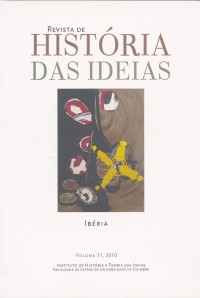Please use this identifier to cite or link to this item:
https://hdl.handle.net/10316.2/41516| DC Field | Value | Language |
|---|---|---|
| dc.contributor.author | Archer, Paulo | - |
| dc.date.accessioned | 2017-04-30T22:23:33Z | |
| dc.date.accessioned | 2020-09-30T11:27:43Z | - |
| dc.date.available | 2017-04-30T22:23:33Z | |
| dc.date.available | 2020-09-30T11:27:43Z | - |
| dc.date.issued | 2010 | - |
| dc.identifier.issn | 0870-0958 | - |
| dc.identifier.issn | 2183-8925 (digital) | - |
| dc.identifier.uri | https://hdl.handle.net/10316.2/41516 | - |
| dc.description.abstract | Interpretar os sentidos do iberismo cultural de José Saramago, o mais representativo autor das letras portuguesas no último quartel do século XX e na transição secular, constitui o escopo deste estudo. Compreender como os materiais arqueológicos (de uma arqueologia prospectiva) que transportou para a escrituração romanesca e para a diarística, sobretudo a partir de A Jangada de pedra, o conduziram a uma viagem que em crescendo reivindicaria um largo espaço panibérico, "entre a América [a África] e a Europa", confluência utópica que não deixava de ser hipercrítica face ao momento mesmo da integração económica e política da Ibéria na matriz institucional europeia. Daí que, a partir de 1993, a ida para a ilha (Lanzarote) representasse não apenas a expatriação - que começou por ser - mas a plenitude de uma ficção vivida apaixonadamente como realidade. | por |
| dc.description.abstract | Interpreting the senses of the cultural Iberianism of José Saramago, the most representative author of Portuguese letters in the late 20th century and the turn of the century, is the scope of the present study. Understanding how the archaeological materials (of prospective archaeology) that he carried into the writing of novels and diaries, especially after The Stone Raft, led him to a journey that would increasingly claim a vast pan-Iberian space "between America [Africa] and Europe". This utopian confluence was hyper-critical of the very moment of economic and political integration of Iberia in the European institutional matrix; hence going to the island (Lanzarote) after 1993 represented not only expatriation - at the beginning - but also the plenitude of a fiction passionately lived as reality. | eng |
| dc.language.iso | por | - |
| dc.publisher | Imprensa da Universidade de Coimbra | - |
| dc.rights | open access | - |
| dc.title | Para uma arqueologia da Ibéria: na Jangada de Saramago até aos Cadernos de Lanzarote | por |
| dc.title.alternative | Towards the archeology of Iberia: on Saramago's Raft until the Cadernos de Lanzarote | por |
| dc.type | article | - |
| uc.publication.collection | Revista de História das Ideias vol. 31 | - |
| uc.publication.firstPage | 389 | - |
| uc.publication.lastPage | 414 | - |
| uc.publication.location | Coimbra | - |
| uc.publication.journalTitle | Revista de História das Ideias | - |
| uc.publication.volume | 31 | por |
| dc.identifier.doi | 10.14195/2183-8925_31_15 | - |
| uc.publication.orderno | 16 | - |
| uc.publication.area | Artes e Humanidades | - |
| uc.publication.manifest | https://dl.uc.pt/json/iiif/10316.2/41516/248921/manifest?manifest=/json/iiif/10316.2/41516/248921/manifest | - |
| uc.publication.thumbnail | https://dl.uc.pt/retrieve/11874912 | - |
| item.grantfulltext | open | - |
| item.fulltext | With Fulltext | - |
| Appears in Collections: | Revista de História das Ideias | |
Files in This Item:
| File | Description | Size | Format | |
|---|---|---|---|---|
| para_uma_arqueologia_da_iberia.pdf | 8.11 MB | Adobe PDF |  |
Items in DSpace are protected by copyright, with all rights reserved, unless otherwise indicated.
